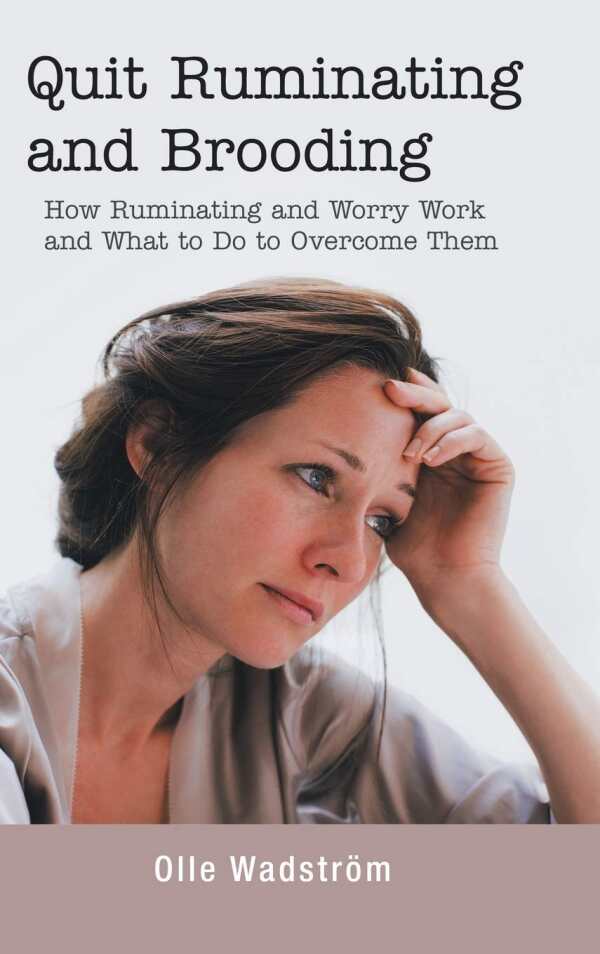Quit Ruminating and Brooding
How Ruminating and Worry Work and What to Do to Overcome Them
Quit Ruminating and Brooding is a straightforward, fascinating look at what rumination means—and how to end the behavior for good.
Olle Wadström’s innovative self-help book Quit Ruminating and Brooding is about treating obsessive thoughts in a way that is long-lasting and effective.
This book, written by a Swedish therapist who has used the outlined treatment with his own patients, proposes a solution to obsessive worrying (also known as ruminating) that is counterintuitive to American notions of positive thinking as curative. Well-organized and incisive, the book argues that ruminating is self-rewarding, acting as a form of comfort and a loop of positive reinforcement. The book advocates for accepting one’s worries as plausible and suggests that blowing worries up into a worst-case scenario helps to slow ruminating behavior, easing fear through exposure.
Written in a clinical yet straightforward manner, Quit Ruminating and Brooding is easy to understand. Its concepts are simple to apply to almost any situation. There is some repetitiveness when it comes to the book’s key concepts, like around not reinforcing behaviors and the different types of comforting thoughts, if the material tends to be presented in slightly different ways that take the backgrounds of sufferers, and the specific situations they are presented with, into account. Some focus is placed on those with other disorders as well, including OCD and social phobias, and how their individualized ruminating differs. Here, too: concepts are laid out in a clear way and with numerous examples.
Helpful charts come throughout the text. They highlight concepts like behavior chains and conditioning, showing how they work, and clarify important definitions and points with highlighted blocks. Amusing cartoons and tables of information list comfort techniques, showing how to replace them with exposure. Each chapter ends with a summation of its material and some context for the next section.
An effective ending includes a quiz to help ruminators identify themselves, an appendix filled with advice and naming different approaches, and a helpful, if overly long, email exchange between a doctor and patient that better shows the concept in action.
Though the writing is dry at times, its tone fits the material well. Real-world stories and examples of various patients using these techniques make the book more interesting, resulting in a balance of scientific principals with stories. The end effect is that the book is both balanced and engaging.
Quit Ruminating and Brooding is a straightforward, fascinating look at what rumination means—and how to end the behavior for good.
Reviewed by
Angela McQuay
Disclosure: This article is not an endorsement, but a review. The publisher of this book provided free copies of the book and paid a small fee to have their book reviewed by a professional reviewer. Foreword Reviews and Clarion Reviews make no guarantee that the publisher will receive a positive review. Foreword Magazine, Inc. is disclosing this in accordance with the Federal Trade Commission’s 16 CFR, Part 255.

